
Lepidoptera and Odonata Surveys Underway
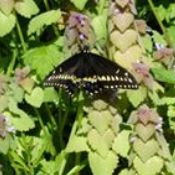
Volunteers began lepidoptera and odonata surveys in Dyke Marsh on April 20, 2016, led by Jim Waggener. On the 20th, surveyors identified five butterfly species in a brief span. The peak time for surveys is May through September. This work helps identify and save critical habitat that preserves biodiversity in our region.
Raptor Rapture 2016
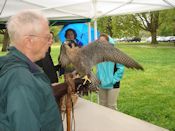
Under a steady drizzle, a steady stream of raptor fans attended the annual Raptor Rapture in Belle Haven Park on April 23, 2016, sponsored by FODM, the Raptor Conservancy of Virginia and the National Park Service.
Kent Knowles (pictured) and Gabby Hrycyshyn of the Conservancy brought an Eastern screech owl (gray morph), an American kestrel, peregrine falcon (photo), red-tailed hawk, barn owl and Harris’s hawk. These birds cannot live on their own in the wild.
Breeding Birds Are Resourceful in Choosing Nest Sites
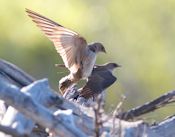
As the weather warms, birds are busy breeding in the Dyke Marsh Wildlife Preserve. In April, FODMers observed red-bellied woodpeckers and northern flickers investigating potential nest cavities, despite facing stiff competition from European starlings. Observers have seen Carolina chickadees and fish crows carrying nesting material in the Belle Haven picnic area and along the Haul Road.
Attacking that Never-Ending Trash
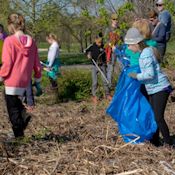
On April 16, 2016, 66 enthusiastic volunteers of all ages turned out on a beautiful spring day and collected trash along the Potomac River and Dyke Marsh shoreline. The group found plastic bottles, aluminum cans, fast food boxes and wrappers, plastic bags, pieces of Styrofoam, at least two tires and more – too much.
Water Quality Testing Finds Impaired Streams Flowing into Dyke Marsh
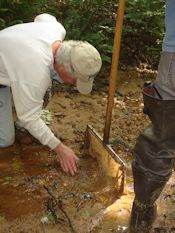
FODMers, guided by Dan Schwartz, soil scientist, Northern Virginia Soil and Water Conservation District, conducted biological water quality testing on two unnamed streams flowing into the western part of Dyke Marsh on April 2 and June 11, 2016.
The findings are disappointing, but not surprising. Most streams in Fairfax County are impaired.
Frog and Toad Surveys Are Underway

Thanks to members Laura Sebastianelli and Deborah Hammer, FODMers are conducting a frog and toad survey in Dyke Marsh and other areas, as part of the FrogWatchUSA national monitoring program. People living near Dyke Marsh West have heard fewer frog and toad calls in recent years and FODM would like to document species and trends.
Do Trees Have Antifreeze?
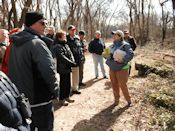
FODM Board member Jessica Strother, a forester, led a walk on February 27, 2016, and described three of the ecotones of the preserve: the swamp forest, the floodplain forest and the tidal marsh. She explained that trees breathe through their leaves and root system. Trees like the pumpkin ash tolerate water, but cedars like drier, upland soil.
How Noise Affects Birds
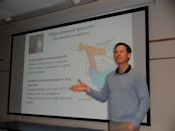
On February 28, 2016, Dr. David Luther, George Mason University biology professor, gave a presentation to FODMers and friends on his research analyzing the effects of noise on birds’ communication, a field called “acoustic ecology.” Generally, birds sing to attract mates, to defend territories and to establish “social status,” he told the 75 attendees. In urban areas, anthropogenic noise, like the noise from traffic or gardening tools, can cause birds to change their behavior and their songs.
The January 2016 Oil Spill

On February 22 at Belle Haven Park, several members of the Friends of Dyke Marsh attended and helped release 21 Canada geese that had been oiled and cleaned by staff of Tri-State Bird Rescue and Research of Newark, Delaware.
FODMers and others reported to local, state and federal authorities on February 3 that an oil sheen was in the water at the Belle Haven Marina. Two people photographed an oil sheen that day, one at the marina and one at 7831 Southdown Road, almost a mile south of Dyke Marsh. Tri-State staffers said they were called on February 4 and that they and others caught birds for a week at Roaches Run, Hains Point and Gravelly Point.
Spring Courtship Has Begun
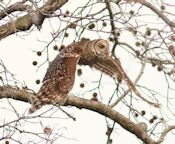
Spring is underway in Dyke Marsh, especially in the “bird world.” Former FODM President Ed Eder has taken these beautiful photographs and made a video of some recent bird sightings in Dyke Marsh.
Two barred owls (Strix varia) have been seen near the Haul Road. Here is one flying through a sweet gum tree.
Christmas Bird Count Included Dyke Marsh
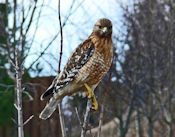
Many FODMers participated in the National Audubon Society’s annual Christmas Bird Count (CBC) in January 2016. Larry Meade, president of the Northern Virginia Bird Club, gave this report in the club’s February newsletter, The Siskin:
Students Produce Video about Dyke Marsh
Students from Thomas Jefferson High School have created a video on wetlands and Dyke Marsh restoration. Continue reading - See Video


AlbertHerring-b4cc6b5cfb.jpg)



 Friends of Dyke Marsh, Inc. is a non-profit 501(c)(3) organization.
Friends of Dyke Marsh, Inc. is a non-profit 501(c)(3) organization.